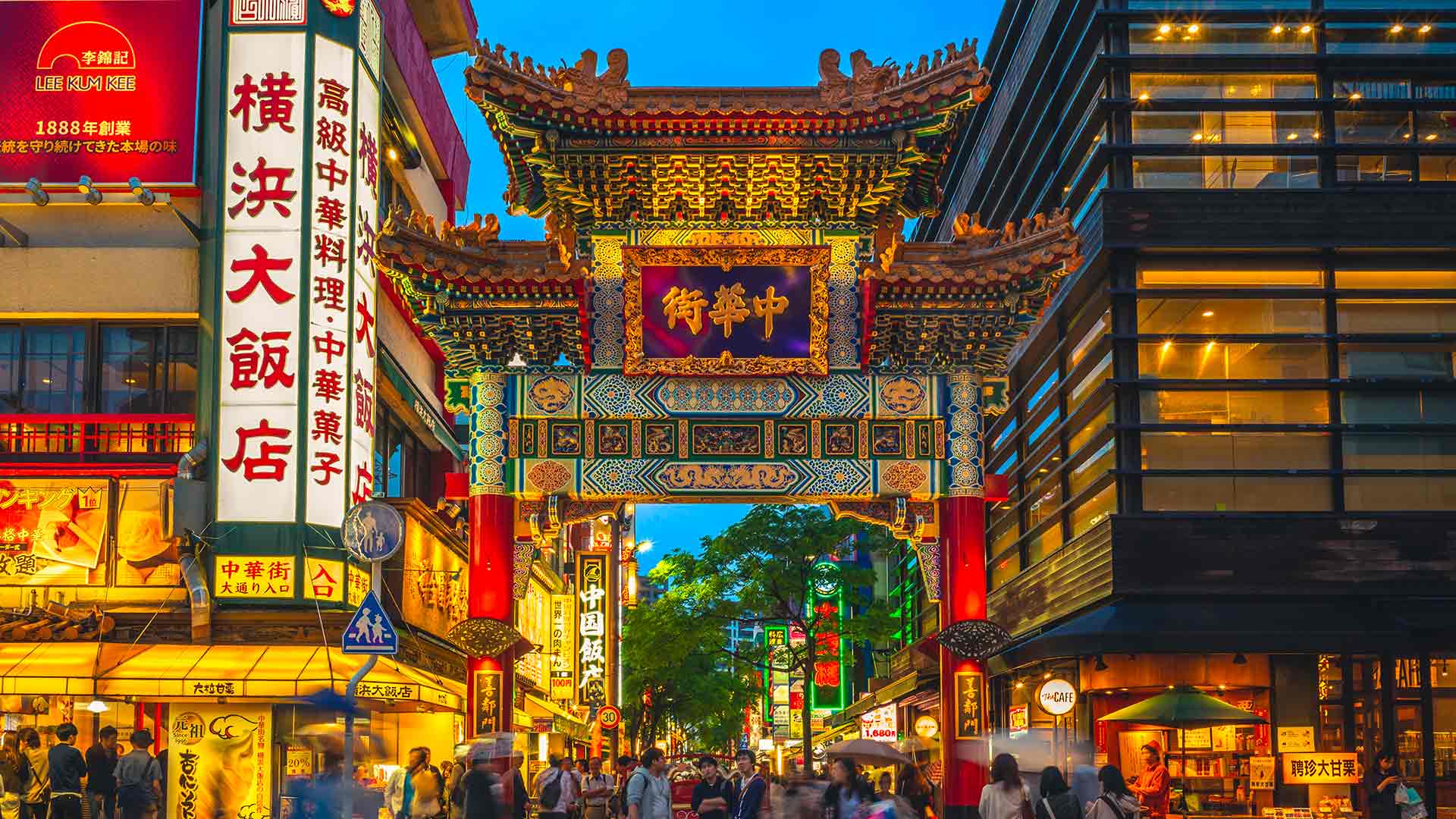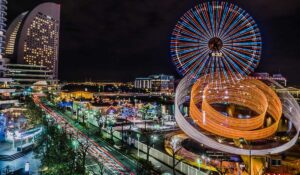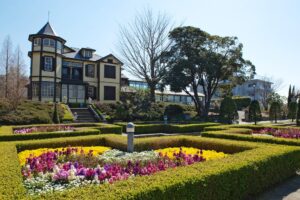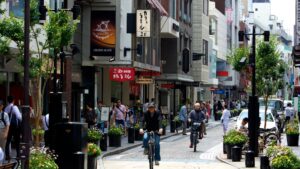Yokohama Chinatown is the largest chinatown in Japan, located in Yamashita-cho near Yamashita park. There are approximately 200 restaurants and 300 shops in the town of just 500 square meters. You can eat various kinds of Chinese cousine such as Cantonese, Shanghai, Beijin, Szechuan and Taiwanese in the town.
When Japan opened a seaport in Yokohama in 1859, foreign diplomats and traders came to Yokohama from Shanghai or Hong Kong to station in consulates or to start a business. They brought Chinese as their servants with them because they needed someone who understand western culture and can communicate with Japanese.
Many Chinese with skills like cooks, tailors and painters began to arrive after shipping companies inagurated liners between Yokohama and Shangahai and Hong Kong. Most of them were Cantonese. They began to live in the area on the west side of the foreign settlement, built a school, a temple and a commerce assosiation and created a community. That is the origin of Yokohama Chinatown.
The majority of businesses was grocers. Restaurants were a few until before the World War II. After the war ended in 1945, large part of Yokohama central area was occupied by the U.S. forces and many bars and restaurants for the troopes were opened in the town. Until 1955, the town had been called “Nanking town”.(Nanking is a city in China.) However,since after they erected the gate, which carries the name of “Chinatown”(see the picture on the right), the town came to be known as it is now.
After Ishikawa-cho Station of the Negishi Line opened, the access to the town was improved, many visitors began to visit the town. In 1972, Japan normalized relationship with China and China became the craze. Those events drove the transformation of the town from a town of chinese into a town of Chinese restaurants and its culture. In 2004, Motomachi-Chukagai (Motomachi-Chinatown) Station opened.
Yokohama Chinatown has been connected to Shibuya station in just 30 minutes by the Minato Mirai Line. On March, 2006, Ma Zhu Miao temple was built near the south gate.
In Chinatown, there are many events and festivals throughout the year such as Spring festival in February, Ma Zhu Miao festival in March, The birth day of Kwan Tai in August, Moon festival in October and Food festival in November.
Yokohama Chinatown Map
Top Things To Do in Yokohama Chinatown
- Explore the Chinatown Gate: This large, ornate gate marks the entrance to Chinatown and is a popular spot for taking photos. Take your time to properly frame your next Instagram success story.
- Stroll through the streets: Just like the entire Yokohama, Chinatown is filled with colorful shops, restaurants, and street vendors, so take some time to wander and explore. I am a firm believer that you need to experience a city on foot, and this is a place where you can experience many great things.
- Visit the Chinese Temple: The Chinese Temple in Yokohama Chinatown is a beautiful, historic building that is worth a visit. You don’t have to be religious, just admire good craftsmanship and a good deal of local history.
- Try some authentic Chinese food: Chinatown is known for its delicious food, so be sure to try some of the local specialties while you’re there.
- Shop for souvenirs: Chinatown is a great place to find unique souvenirs, such as traditional Chinese clothing, jewelry, and decorative items. You’re not a real traveler if you don’t shop from gift shops and street vendors.
- Attend a cultural event: Chinatown often hosts events and festivals that celebrate Chinese culture, so check to see if there are any events happening during your visit.
Kwan Tai Temple
Kwan Tai Temple sits on the corner of Kwan Tai street and Chuzan Ro in the town. Kwan Tai Temple enshrines Kwan Tai, a famous general in the ancient Chinese Imperial army in about 200 AD. Legend says that he exceled in both literary and military arts. He is also said to be 2.7 meter high, or 9 feet and carry a sword of 40kgs, or 90lbs. Read full story…
Ma Zhu Miao Temple
The Ma Zhu Miao Temple is a Chinese temple of Ma Zhu, the goddess of Sea. Ma Zhu is the Taoist goddess of the sea, and became later that of Journey, who protects fishermen and sailors from a sea disaster. She is extremely popular among the Taiwanese,the Fusianese, the Cantonese, and the Vietnamese and worshipped by approximately 200million of people across 26 countries. Read full story…
Lunch
Lunch at weekends or Dinner is going to be not cheap. I recommend you visit Yokohama Chinatown during weekdays for lunch. “Today’s specials” are offered at lunch time during weekdays at most of restaurants. They come with a Chinese dish, a cup of soup, a bowl of rice, a serving of Chinese pickles and a serving of fruits or a Chinese pudding.
At many restaurants, there are three to four choices of today’s special. If you visit with your friends and each of you order a different choice, you can share them. Today’s specials are offered at 700 yen to 1,500 yen. They are generally served from 11 a.m to 2 p.m.




